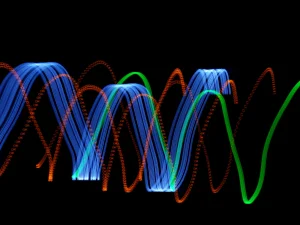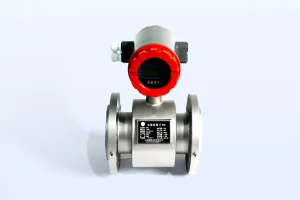
Os metros de fluxo são ferramentas realmente limpas que observam como os líquidos se movem através de tubos em fábricas e grandes plantas. Eles mantêm as coisas correndo bem, ficam seguras, e fazem o seu trabalho bem. Os dois tipos de metros de fluxo – eletromagnéticos e ultrasônicos – são ótimos para diferentes tipos de trabalho. Eletromagnéticos são ótimos para líquidos que podem carregar um pouco de eletricidade, como água ou espessas coisas de lama, e eles não são fechados facilmente. Mas eles não conseguem lidar com coisas como óleos que não deixam a eletricidade fluir. Os metros de fluxo ultrassônicos usam som para descobrir o rápido fluxo dos líquidos, e eles não precisam tocar no líquido, o que é perfeito para coisas limpas em tubos super grandes. Mas pequenas bolhas ou picos no líquido podem arruiná-las. Para escolher o melhor, você tem que pensar sobre o quão grande é o líquido, quão amplo é o tubo, quão spot-on você precisa das medições, e quanto trabalho é necessário para mantê-los em funcionamento. Métros eletromagnéticos são fortes para coisas confusas como esgotos ou químicos, enquanto os ultrasônicos são realmente úteis para adicionar a sistemas já instalados. Quanto custam, quanto são fáceis de colocar, e quanto tempo continuarão trabalhando são grandes negócios também. Além disso, ter uma empresa que te ajuda é muito importante.
Os metros de fluxo são uma grande ajuda em lugares como fábricas porque eles rastream quanto líquido ou gás se movem através de tubos. Eles dizem exatamente quanto coisas estão fluindo, para que você possa manter tudo sob controle. Isso faz o trabalho correr mais suave, corta as coisas ficando desperdiçadas, e mantém as coisas seguras. O mercado de contadores de fluxo valeu mais de 11,76 bilhões de dólares em 2024 e espera crescer para 26,34 bilhões de dólares em 2037, crescendo em 6,4% todos os anos, especialmente devido às grandes necessidades em sistemas de água e água residual. Por exemplo, em instalações elétricas, metros de fluxo ajudam a refrigerar máquinas ou a misturar em produtos químicos. Os dois tipos de metros de fluxo, como os eletromagnéticos, verificam o fluxo em sistemas de refrigeração imediatamente. Isto impede que as máquinas se aquecem demais. Em pontos como fábricas de alimentos, fábricas de medicina, ou projetos para ajudar o meio ambiente, os metros de fluxo asseguram-se de que as medições são realmente exatas. Isso é super importante para fazer bons produtos e aderir às regras.researchnester.com
Para encontrar o medidor de fluxo certo, você precisa pensar em algumas coisas chave:
Cada um destes pontos ajuda a escolher o medidor de fluxo que é justo para seu trabalho.
Os metros de fluxo eletromagnético usam um truque científico elegante chamado A lei de Faraday para medir a quantidade de fluxo líquido condutivo. Dentro, há uma bobina que faz um campo magnético. Quando um líquido que transporta eletricidade flui através, ele cria um pequeno pedaço de energia baseado no quão rápido ele se move. Sensores especiais pegam esse poder e usam-no para descobrir quão rápido o líquido está indo.

O tubo do metro é suave, com nada escorregando para bloquear o fluxo. Isso dificulta o bloqueio, então é perfeito para líquidos com coisas como areia ou fibras neles.
Estes metros são super fixes em lugares como:
Elas funcionam muito bem para a maioria dos líquidos que transportam eletricidade, como água, lama, ou pastas, mesmo que tenham pedaços neles. Mas eles não podem medir coisas como petróleo ou gases que não conduzem eletricidade.
Coisas incríveis:
coisas não tão maravilhosas:
Os metros de fluxo ultrassônicos usam ondas sonoras para descobrir quão rápido um líquido está se movendo. Eles vêm em dois tipos:
Estes metros não t êm peças em movimento e geralmente sentam-se fora do tubo, então eles não tocam o líquido.
Métros ultrassônicos são ótimos para líquidos limpos, mas alguns Doppler podem lidar com coisas mais confusas. Você os encontrará em:
Eles são realmente úteis quando você não pode cortar em um tubo para adicionar um metro.
Grandes coisas:
coisas não tão grandes:
Os metros eletromagnéticos continuam a funcionar bem mesmo se a espessura, calor, pressão ou condutividade do líquido mudar um pouco (desde que conduza alguma eletricidade). Eles são super confiáveis para empregos difíceis, com uma precisão de cerca de /- 1%. Os metros ultrassônicos, com uma precisão de cerca de /- 2%, podem ser misturados por mudanças de temperatura ou coisas como bolhas ou picos, mas são fantásticos para líquidos limpos. Para coisas estúpidas como esgotos ou esgotos, os metros eletromagnéticos são a melhor escolha. Seus tubos abertos detêm os clogs, fazendo-os ótimos para pontos duros.ifm.com
Os metros eletromagnéticos precisam ser colocados no ponto certo, geralmente baixo no tubo, para evitar bolhas de ar. - Uma montagem de siphon é uma boa ideia. Se o líquido tem sólidos, um tubo em forma de U ou um tubo que vai direto para cima funciona melhor.
Os metros ultrassônicos são uma brisa para se instalar porque eles apenas pegam no tubo. Não é preciso cortar, o que economiza um monte de tempo e esforço.
Por mantê-los em marcha:
O que você paga em frente depende do tamanho e características do medidor. Os metros eletromagnéticos podem custar mais no início, mas duram muito tempo com menos manutenção. Os metros ultrassônicos são mais baratos para colocar, pois você não precisa tocar nos tubos, mas eles podem precisar de mais verificações se as coisas ficarem complicadas.
Se você está lidando com coisas espessas como desgaste ou mistura em substâncias químicas como ácidos, o Chen Shuo Electromagnetic Flow Meter Series é uma grande escolha. É super duro, não se rasga facilmente, e limpa rápido. Também é perfeito para sistemas de água urbanos onde você precisa de medições exatas, mesmo se a pressão continuar a mudar.
Para pessoas que trabalham em sistemas de aquecimento e refrigeração ou tubos de petróleo e gás que precisam adicionar metros sem parar tudo, o Chen Shuo Ultrasonic Flow Meter Series é fantástico. Seu design de clip-on permite que você o instale rapidamente sem fechar as coisas, o que é uma grande vitória quando você tem pressa.

Os sistemas de água da cidade geralmente têm tubos gigantes que transportam água limpa ou crua. Os metros de fluxo eletromagnético podem lidar com todos os tipos de tamanhos de tubos, o que os faz incríveis para sistemas onde você precisa manter a pressão estável sem perder qualquer fluxo. A indústria da água e água residual é o maior usuário de metros de fluxo porque medições precisas são super importantes para a gestão da água e seguir regras estritas, especialmente em lugares como a América do Norte e a Europa.futuremarketinsights.com
Fabricas de alimentos e bebidas precisam de metros que permanecem super limpos e precisos para manter os produtos seguros. Os metros eletromagnéticos, com seus pequenos erros, são ótimos para coisas como leite ou sírupo, onde mesmo um pequeno erro pode estragar o sabor. A indústria de alimentos e bebidas usa muitos metros de fluxo para assegurar que os produtos são consistentes, permanecem limpos, e seguirem as regras de saúde.alliedmarketresearch.com
Sempre assegure-se que os detalhes do medidor – como intervalo de fluxo (20:1 a 50:1), limites de temperatura, ou tipos de sinal – correspondem ao que você precisa todos os dias. Alguns metros permitem ajustar o fluxo com um botão simples aqui, o que é realmente útil quando você está configurando as coisas.
Escolhar uma empresa de confiança como Chen Shuo significa que você obtém mais do que apenas produtos fixes. Eles lhe dão conselhos especialistas de escolher o medidor certo para mantê-lo funcionando bem durante anos.
Q1: Posso usar um medidor eletromagnético para líquidos baseados no petróleo?
A: Não. Os metros de fluxo eletromagnético não podem medir líquidos que não transportam eletricidade, como óleos.
Q2: O que é melhor para a falha - ultrasônica ou eletromagnética?
A: Os metros eletromagnéticos são muito melhores para o desvio. Seu design aberto impede que os clogs ocorram.
Q3: Os metros de fluxo ultrasônicos precisam de mudanças de tubos?
A: De modo nenhum! A maioria dos metros ultrasônicos simplesmente pegam em tubos, então você não precisa cortar nada.